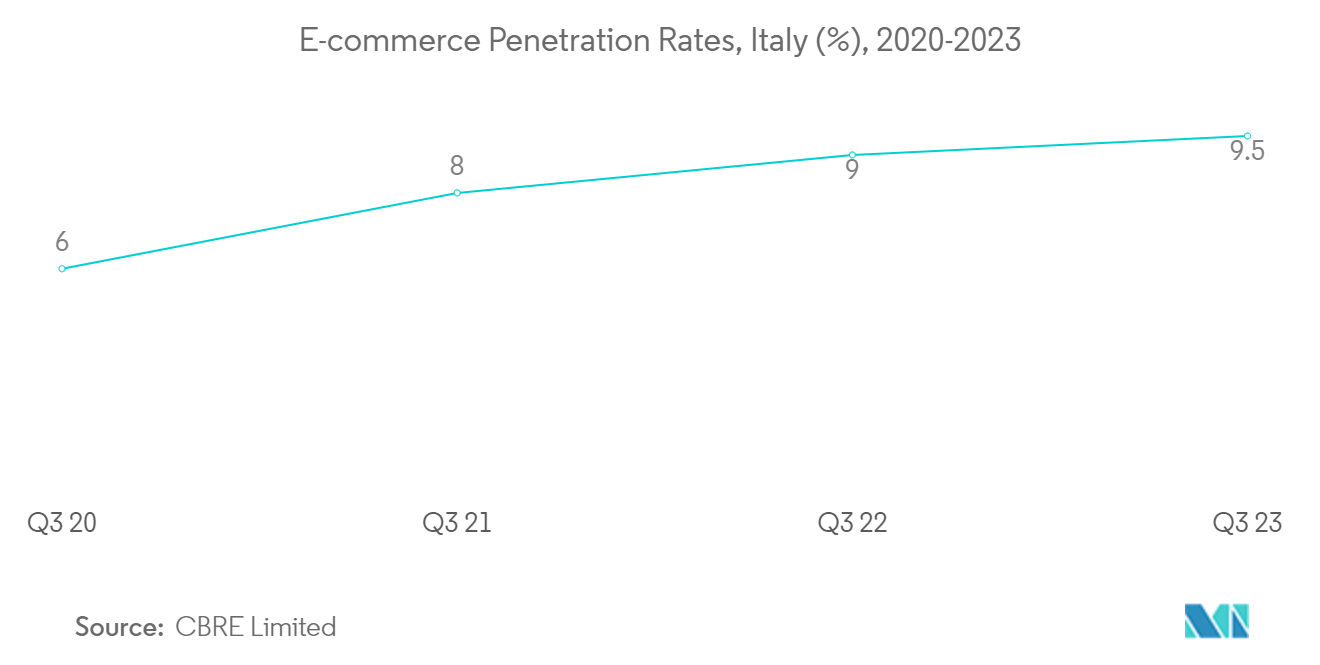Market Trends of Italy Facility Management Industry
The In-house Facility Management Segment is Expected to Hold a Significant Market Share
- In-house facility management refers to services provided by a dedicated resource directly employed by the client organization. In this type of facility management monitoring, performance control is usually conducted under the terms of the conventional employee/employer relationship.
- In-house facility management involves recruiting specialized personnel to maintain and manage various functional attributes of a facility or area. Most generic services are generally outsourced to third-party service providers. However, some services, such as security services or cybersecurity assistance, are still operated and monitored in-house to assure the safety and integrity of the facilities.
- Retail and hotel industries have supported in-house staff for non-specialized services to some extent. However, organizations and individuals in underdeveloped countries continue using contractors for specialized tasks like elevator, HVAC, and MEP work.
- Factors including increased consumer spending, economic activity, and tourism activities have augmented the occupancy of large residential layouts/projects, hotels, and commercial spaces. This has, in turn, increased the need for better facility management.
- The country is witnessing increasing construction in the residential sector, which will further boost the demand for in-house facility management services. Before the pandemic, building investments were continuously increasing.
- In Italy, logistics sectors are expanding. They are outsourcing and restructuring supply chains, including strategies that benefit third-party logistics players and boost their space requirements. Increased real estate expansion plans will increase the construction of new facilities for the logistics sector, thereby increasing the demand for facility management.

The Commercial and Retail Segment is Expected to Hold a Significant Market Share
- The commercial and retail segment includes office buildings used by suppliers of business services, such as manufacturers' corporate offices, IT and communication businesses, and other service providers. Retail facilities management refers to making a company's location hygienic, secure, and welcoming while boosting the brand and simplifying things for the clients. Cleaning floors, restrooms, and window displays, assembling eye-catching retail displays, and occasionally completely renovating the facility or shop floor constitute the retail facilities management process. These tasks vary based on the client's requirements.
- The country's commercial building industry has seen significant investments, propelling the facility management business. Various investment firms have hired real estate management businesses to handle their real estate investments.
- According to JLL, office leasing increased in both Rome and Milan. Corporate tenants continue to seek flexibility with novel leases, while workers want freedom in their working lives. In Rome, take-up climbed to around 150,000 sq. m (+5% Y-o-Y). In 2023, the market-wide trend in company consolidations, space reduction, and prime space relocating and an increased focus on 2030 sustainability targets were anticipated.
- The re-opening of physical retail and e-commerce penetration moderated in Europe after the pandemic. For vital European markets such as Italy, e-commerce penetration broadly returned to its pre-pandemic growth trend and is continuing to grow. Occupiers will likely focus on creating a solid omnichannel experience, seamlessly combining the online and brick-and-mortar experience and increasing customer engagement. Thus, retailers are expected to continue investing in physical stores, focusing more on prime locations.
- The growing retail and construction industry, increasing investment in the commercial sector, and increasing smart buildings in the country are expected to drive the demand for facility management during the forecast period. The gradual growth in the commercial and real estate sectors are expected to drive market growth.


